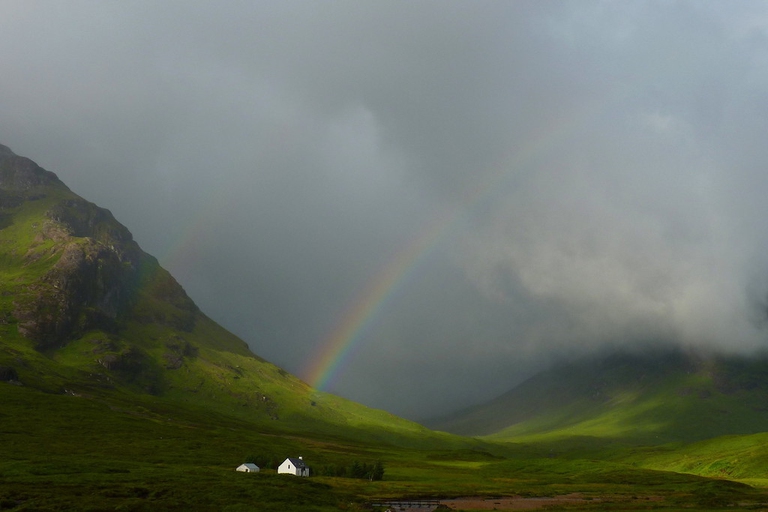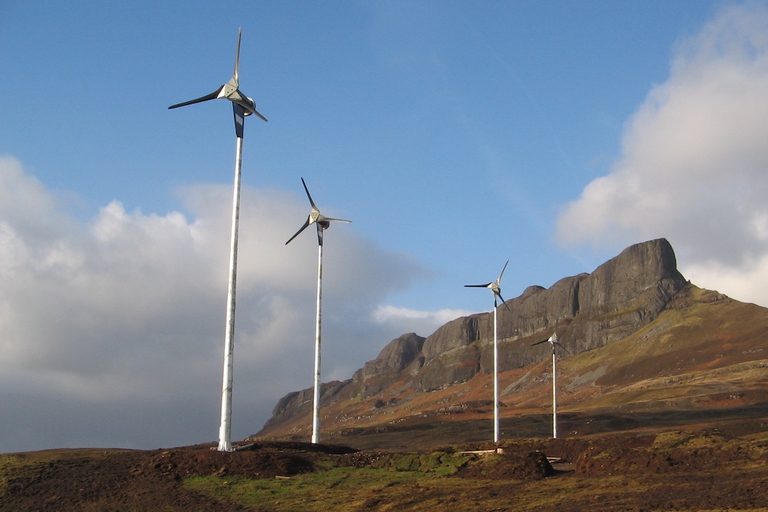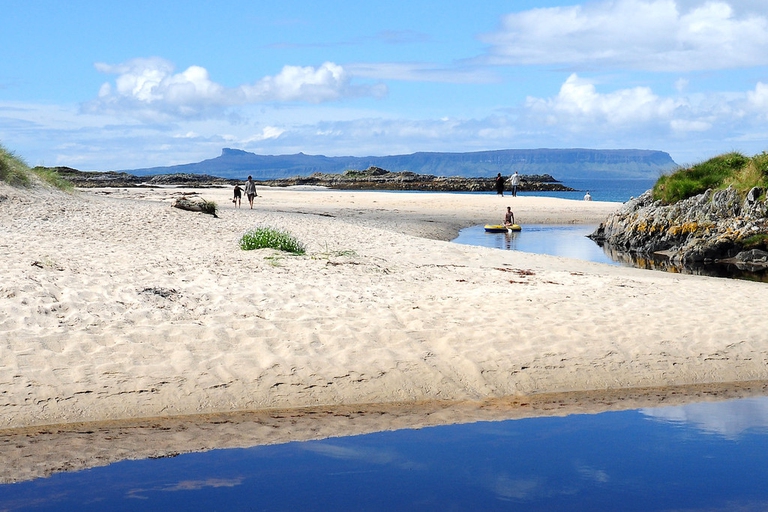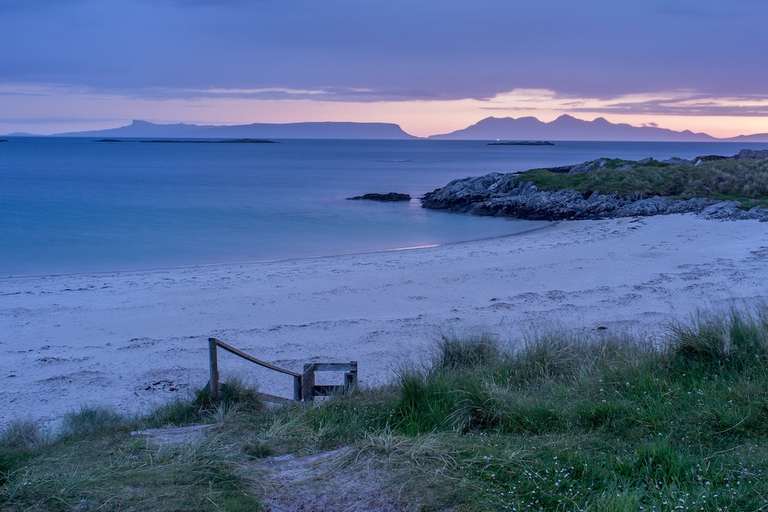
A group of experts in Tokyo suggested pouring radioactive water from Fukushima into the open sea. A marine biochemist explains the consequences of this absurd decision.
The Scottish island of Eigg is self-sufficient for its energy needs, relying almost entirely on renewable sources, especially thanks to a coordinated community effort.
The island of Eigg, located 20 kilometres from Scottish mainland, has achieved a milestone in sustainable development: complete self-sufficiency based on renewable energy. It used to rely on diesel generators for a few hours of electricity a day but in 2008 it became the first community in the world to launch an off-grid system based on renewable sources, the wind, water and sun. This gave 24-hour access to power to its residents for the first time and despite the local population having risen from around 65 at the end of the 1990s to more than 100 due to the influx of outsiders who have married locals, energy provision has remained sufficient to satisfy everyone’s needs.
One 100 kilowatt and two five to six kilowatt hydroelectric generators produce electricity from a weir, while four small turbines contribute a total of 24 kilowatts from the wind. The turbines have been optimally placed to balance wind exposure with minimal turbulence, while taking accessibility and the surrounding landscape into mind. These sources yield most of the energy on the island, especially during the winter months when wind and rain are particularly frequent.
In the summer months, the long days and south-facing slopes feed 50 kilowatt solar panels with a total capacity with up to 184 kilowatts. Although these photovoltaic panels are the lowest yielding of Eigg’s renewable sources, in the summer period from May to July they make significant contributions of up to 25 per cent of total energy production, whilst at other stages they provide under 10 per cent. In addition, careful planning has ensured that the design of the infrastructure doesn’t impact the natural beauty of the island. The renewable plants send live data through internet routers, enabling remote monitoring to help manage the island’s demand for energy.
An 11-kilometre network of underground cables distributes energy in households and businesses around the island with transformers converting the high voltage to domestic voltage. The power is also connected to a bank of batteries capable of providing electricity to the whole island for up to 24 hours. Power can flow both ways: if renewables produce more than is being consumed on the island, the grid recharges the batteries. The batteries eventually become fully charged and accept no more power, at which stage a series of switches activate heaters in communal churches, the community hall and pier lobby. In this instance, residents aren’t charged for consumption, since the whole community benefits from the additional energy. This normally occurs in the winter due to the abundance of wind and rain. When there’s insufficient power, the stored energy in the batteries is used to power the micro-grid. The island’s health centre has its own backup generator in case of power outages and if its fridges are without electricity for approximately three hours, then an alarm sounds and all medication needs to be thrown away.
Eigg’s well-rounded, thought out system provides at least 95 per cent of the power consumed on the island, with the remaining 5 per cent coming from diesel generators. The price of energy is at 23 pence (0.3 US dollars) per kilowatt hour (with a 12 pence daily standing charge), making it one of the cheapest renewable energy systems in the UK.
To ensure that the supply is constant and sustainable, households are capped at five kilowatts (double for businesses). To give some perspective, one kilowatt of energy is the equivalent of running an electric kettle and washing machine at the same time. The limit has also reduced cabling costs, making it safer to use aluminium wire instead of the more expensive copper. Consumers are provided with individual energy metres measuring their power consumption and indicating whether the cut-off point is being approached. If the cap is exceeded and electricity goes out, a 20 pound (25 dollars) penalty fee needs to be paid to turn it back on. To communicate when renewables are generating a low amount of energy, a traffic light system has been set up at the pier: the red light is turned on to signal to limit usage, while a green light indicates normal usage. The indications given by this mechanism can be adhered to voluntary, nonetheless they have resulted in a 20 per cent cut in energy use.
This system has been unanimously accepted by all residents, despite everybody having to decrease energy consumption. Homes and businesses reduced it by 47 per cent by improving energy efficiency and using less of it, also winning the Ashden Award for energy efficiency in the process, as well as the Best Community Initiative at the Scottish Green Energy Awards.
Historically, Eigg used to be owned by a series of landlords, and formalities made the development of public ownership near impossible. In 1997, the Isle of Eigg Heritage Trust purchased the island, developing the self-sufficiency project with the help of a 1.66 million pounds (2.15 million dollars) investment by the EU’s European Regional Development Fund and contributions from national bodies and islanders, as well as the collaboration and dedication of the local community, which cut down on costs by taking over certain jobs (such as laying the foundations for the solar panels). This model of public ownership and responsibility has set an example abroad and has attracted researchers from all over the world.
What is special about Eigg is that the system is the outcome of a community collaboration. The maintenance team is comprised of local residents who have taught themselves the necessary skills, including a baker, gardener and knitter who carry out checks on the generators twice a day, to make sure they’ve remained unused since the previous check. In addition, the position of Eigg Electric’s team leader is rotated every three years. The diverse range of skills and experience means that together locals are able to perform the necessary work on the system. Overall, the collaborative and insightful effort on the part of Eigg’s community has successfully delivered a sustainable means to manage the island’s natural resources, an example the rest of the world will hopefully follow.
Siamo anche su WhatsApp. Segui il canale ufficiale LifeGate per restare aggiornata, aggiornato sulle ultime notizie e sulle nostre attività.
![]()
Quest'opera è distribuita con Licenza Creative Commons Attribuzione - Non commerciale - Non opere derivate 4.0 Internazionale.
A group of experts in Tokyo suggested pouring radioactive water from Fukushima into the open sea. A marine biochemist explains the consequences of this absurd decision.
A federal court in Washington, D.C. has struck down the Dakota Access Pipeline, following years of campaigning by the Standing Rock Sioux tribe.
President Magufuli in unmovable in going ahead with the Stiegler’s Gorge dam despite conservationists’ warnings of the damage it will cause the Selous Game Reserve’s ecosystem and wildlife.
A large dam along the Luangwa River in Zambia would have posed a serious risk to local people and wildlife, leading hundreds of thousands to oppose it. A call to which the government responded by halting plans to build it.
The first one megawatt solar power plant in the Chernobyl exclusion zone has become operational. This is the first step in a renewable energy development project promoted by the Ukrainian government in the area.
A tanker exploded at a gas and petrol station in Nigeria’s Nasarawa state on the 10th of September, killing 35 people and leaving some burned beyond recognition; 3 citizens had several spine and brain injuries, 2 of them are still on Intesive Care Units. Fela Habila , a local singer, is now stable and out of danger but
The largest tidal power plant in the world will be built in the Larantuka Straits. It will serve 100,000 people and help overcome some of the challenges of energy provision in Indonesia.
Robben Island’s solar energy micro-grid project will produce almost one million kilowatt hours of electricity annually, significantly reducing the cost and impact of buying diesel.
The Balikpapan oil spill off the coast or Borneo in Indonesia covers 120 square kilometres. It has caused the death of 5 people, health and economic problems for local communities, as well as threatening wildlife and local ecosystems.











